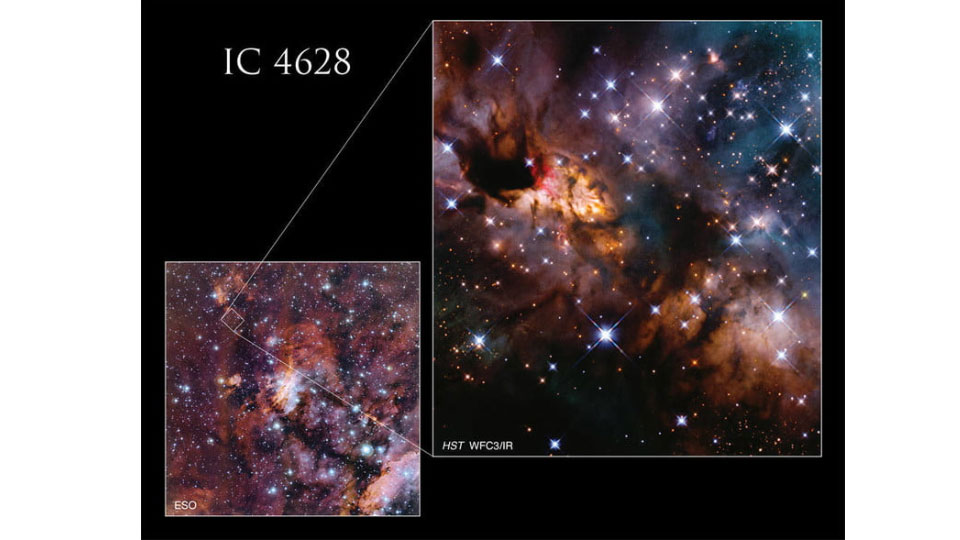Hubble telescope captures prawn Nebula drifting through cosmic deep

New Delhi : If you look in the sky, you are expected to see stars, planets, and even international space station at certain occasions. But, Hubble telescope is showing something you may not have expected to see in the sky: A Prawn.
An image posted by the scientists using Hubble telescope shows a beautiful Prawn Nebula, located around 6,000 light-years away in the tail portion of the constellation Scorpius.
The Prawn Nebula is much bigger in size, but due to its distance and dim lights, it is hard to spot it in the sky. The stars which can be seen appear to be a blue-white color, but in addition to this most of the stars within the nebula emit light in other portions of the spectrum that are invisible to the human eye.
Hubble telescope has converted it into visible wavelengths and the infrared, allowing human eyes to see the beautiful Prawn Nebula.
“The Prawn Nebula, also known as IC 4628, is an emission nebula, which means its gas has been energized, or ionized, by the radiation of nearby stars,” Hubble scientists explain. “The radiation from these massive stars strips electrons from the nebula’s hydrogen atoms. As the energized electrons revert from their higher-energy state to a lower-energy state by recombining with hydrogen nuclei, they emit energy in the form of light, causing the nebula’s gas to glow. In this image, red indicates the presence of ionized iron (Fe II) emission.”
To show the nebula in its full context, the Hubble scientists also released this image of the full nebula, showing where this particular zoom-in image fits into the whole:

Image: NASA, ESA, J. Tan (Chalmers University of Technology), and ESO; Processing; Gladys Kober (NASA/Catholic University of America)








